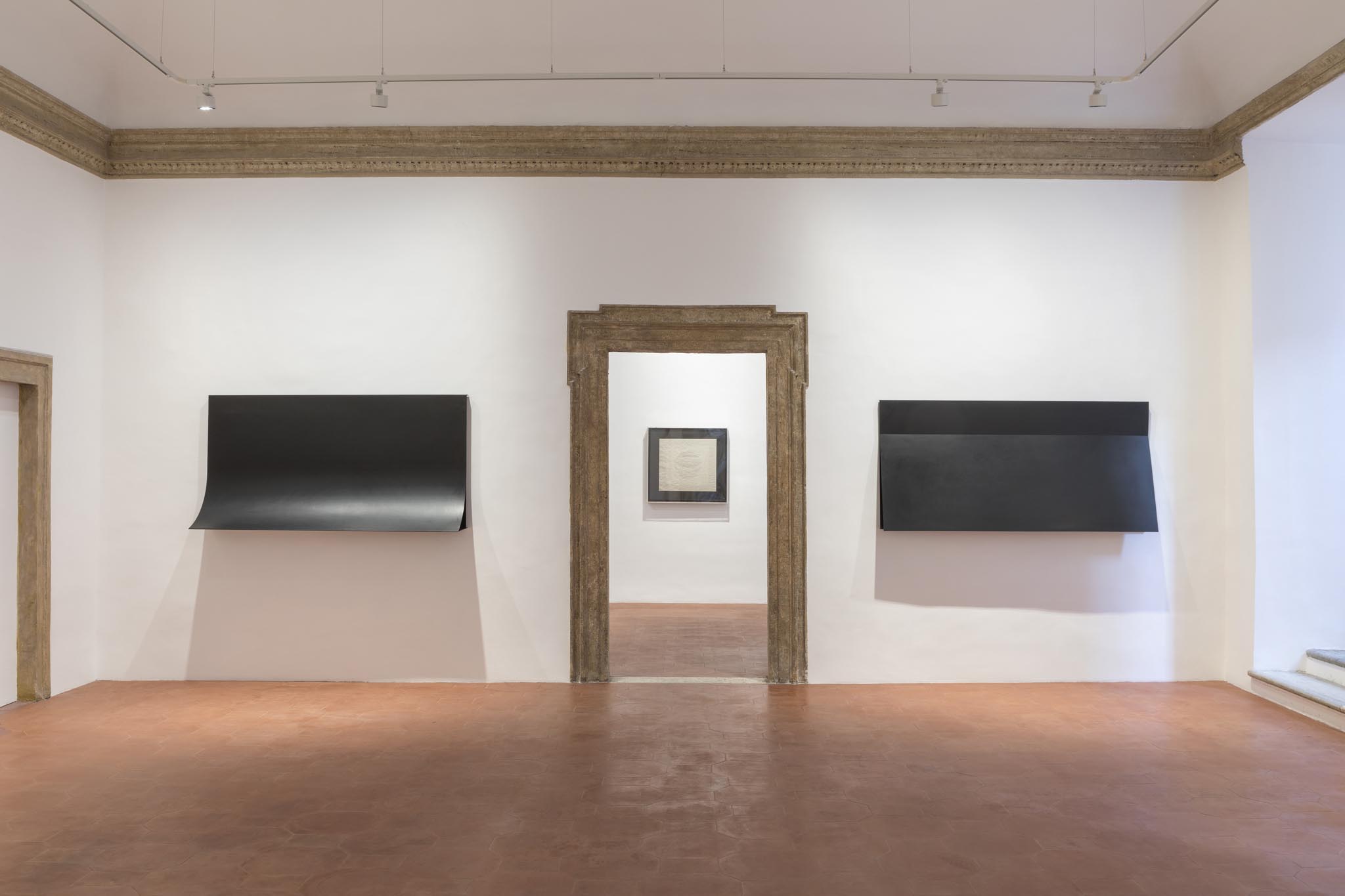Francesco Lo Savio (Rome, 1935 – Marseilles, 1963) was one of the most complex and enigmatic figures of the Italian post-Informal avant-garde. Alongside Piero Manzoni, he is recognized as a central figure in the European revival of Italian art. An artist ahead of his time, Lo Savio received significant posthumous recognition after his tragic death at the age of 28.
Lo Savio was perhaps the artist best able to capture the cultural and artistic transition from the 1950s to the 1960s—a period marked by a fervent modernist pursuit of utopian transformation. His practice, liberated from formal conventions, rejected representation and signification, aiming instead to become an absolute and universal experience.
He made his debut in 1958 at the Premio Cinecittà, a group exhibition organized by the Italian Communist Party, which included prominent artists such as Mario Schifano, Sergio Lombardo, Renato Mambor, and his brother Tano Festa. Lo Savio soon moved away from these early experiments rooted in the Informal language. In 1959, he began developing the Spazio-Luce series: monochrome canvases that explored the energetic and spatial potential of color. The subtle variations in luminosity in these works created arcs of spatial-light effects, expanding from the two-dimensional surface into the surrounding environment.
Thanks to his friendship with Toti Scialoja, Lo Savio was welcomed in 1960 at Galleria La Salita in Rome. That same year, he held his first solo exhibition at Galleria Selecta in Rome and was included in a group show at Galleria Il Cancello in Bologna, curated by Emilio Villa.
His first international exhibitions began in 1961 but were poorly received, leading to deep frustration. In 1963, he published his first and only book, Spazio luce: evoluzione di un’idea, which was reissued in 1975 under the curatorship of Germano Celant. Dedicated “to the memory of Piet Mondrian” and meticulously edited by the artist, the book articulated the intentions behind his artistic practice. It revealed his grounding in contemporary architectural theory, shaped by strong ideological and social concerns, and influenced by Bauhaus, Suprematism, Mondrian, and De Stijl.
Defined by geometric precision and essential hues, Lo Savio’s work functions as a pulsating force of energy. To fully appreciate his practice, it must be experienced in person—confronted, contemplated, and absorbed—revealing its profound spiritual resonance.
Lo Savio’s artistic path unfolds through several distinct series: Spazio-Luce, Filtri, Metalli, and Articolazioni Totali, each marking a step forward in his exploration of the relationship between artwork, space, and light. A few architectural plans and a model of the Maison au soleil, an architectural translation of his thought, have survived.
In the Filtri series, Lo Savio employed semi-transparent surfaces featuring geometric shapes—circles and squares—to create chromatic attenuation, generating the dynamic of light absorption he was seeking. This absorption becomes even more evident in the Metalli series (begun in 1960), due to the matte treatment of their surfaces. With these works, Lo Savio broke free from the constraints of the pictorial rectangle, engaging directly with the environment and emphasizing spatial interaction. In one of his notes, he wrote: “The human being is the only example of structural perfection and maximum static freedom with variable balance.” This belief led to his final phase, the Articolazioni Totali: concrete structures intersected by metal plates, in total dialogue with space and light.
The rediscovery of Lo Savio’s work occurred after his death. In 1968, several pieces were included in Documenta IV in Kassel; in 1972, others appeared in the XXXVI Venice Biennale. He was also featured in Cento opere d’arte italiana dal Futurismo a oggi at the National Gallery of Modern and Contemporary Art in Rome (1969), and in Linee della ricerca contemporanea at the XXXIV International Art Exhibition. In 1979, a major retrospective curated by Germano Celant was held at the Padiglione d’Arte Contemporanea (PAC) in Milan. For the first time, works from 1958 to 1963—Dipinti, Metalli, Filtri, Articolazioni—were brought together, marking Lo Savio’s transition from logical painting to minimal and conceptual sculpture, as well as architectural and urban projects.
Subsequent retrospectives followed: in 2009 at the Museo Nacional Centro de Arte Reina Sofía, and in 2018 at both Galleria Mattia De Luca and the Museo d’Arte Moderna e Contemporanea di Trento e Rovereto. Today, Francesco Lo Savio’s works are part of major Italian collections, including the Galleria Civica d’Arte Moderna e Contemporanea (GAM) in Turin, the Galleria d’Arte Moderna e Contemporanea in Rome, the Fondazione Biscozzi Rimbaud in Lecce, the Fondazione Prada in Milan, the Museo MADRE in Naples, and the Roberto Casamonti Collection in Florence.
